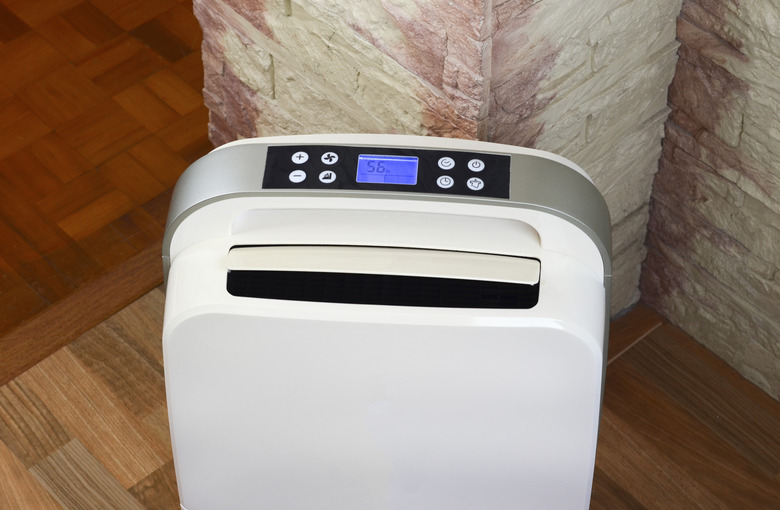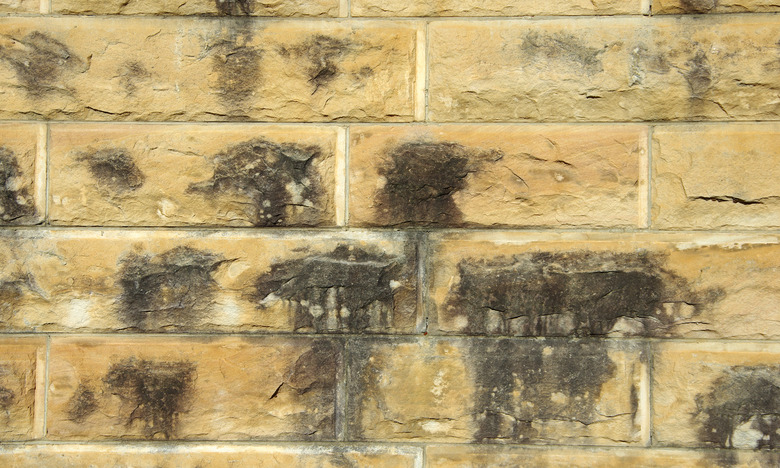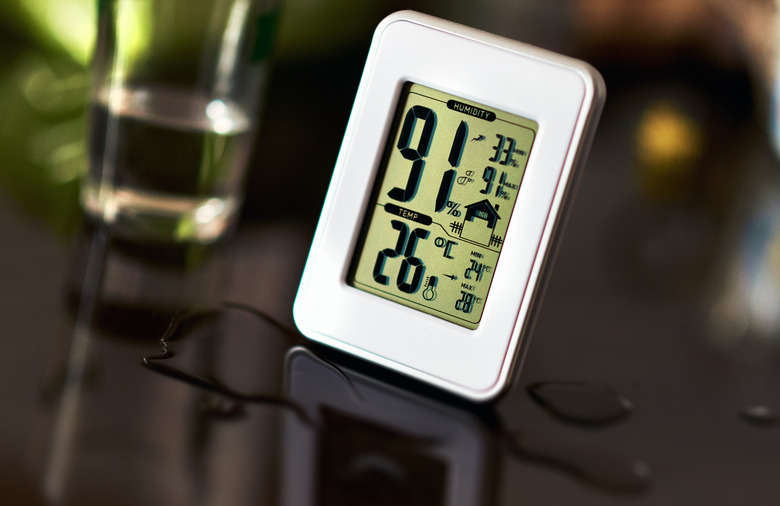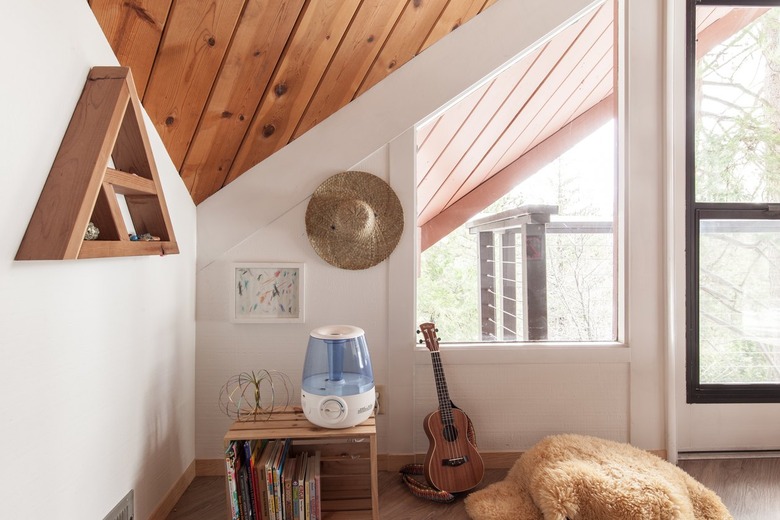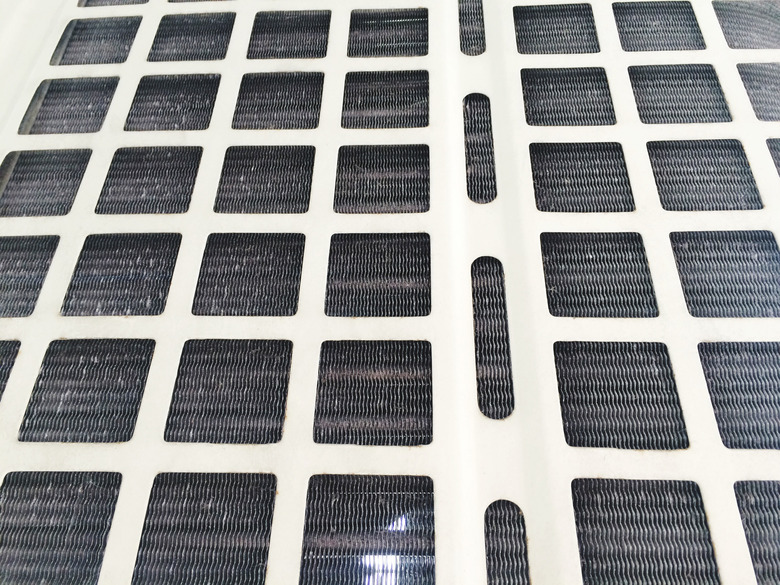What Is A Dehumidifier?
As its name implies, a dehumidifier removes excessive humidity, or moisture, from the air. While a dehumidifier isn't an everyday necessity in many homes, it can be a must-have device wherever excessive moisture is an issue, such as homes in damp climates or in a basement during humid, rainy times of the year. A dehumidifier can mean the difference between a comfortable environment and a swampy, musty home harboring potential health hazards.
Why It's Important to Control the Humidity in Your Home
Humid conditions can foster hazardous mildew and mold growth and cause the buildup of dust mites. Even for people without allergies or asthma, these indoor pollutants can be a problem. If an area is too damp, mold can grow on the walls, ceiling, or floor. Moisture can cause severe water damage to your walls and mold can cause wood to rot, potentially leading to structural damage to a home. High humidity can also cause corrosion on metal doors and other elements. In extreme cases, it can rot wood framing and interior woodwork. In addition, pests like ants, cockroaches, and termites are attracted to moisture.
Some molds are even toxic; black mold (Stachybotrys spp.) is one example. Proactively reducing the potential for mold by keeping humidity levels low is much easier and less expensive than dealing with large-scale mold removal and cleanup, which can be quite complicated.
Besides promoting mold, corrosion, and potential health problems, high humidity leaves a musty smell in your home and just feels uncomfortable. The body cools itself by sweating, but cooling can't happen if the air is too humid for the sweat to evaporate. Besides feeling hot, you also feel sticky. You might notice that crackers taste soggy and bread quickly goes stale if you leave these foods on the counter in open containers for any length of time. These are more indications of the need to reduce indoor humidity.
What Is the Ideal Humidity Inside a House?
The ideal humidity level inside your home is between 30 and 50 percent. This is the best range for your house, your health, and your comfort. In the summer, aim for a humidity level closer to 50 percent when running a dehumidifier, as attempting to keep humidity levels lower can lead to high energy bills. The humid summer months are when dehumidifiers are most likely to be needed due to the naturally moist air.
In winter, when the air is drier in most regions, a relative humidity level of around 30 percent is acceptable. It's unlikely a dehumidifier will be necessary in the winter except in very moist tropical environments. In most temperate zones, winter air is more likely to require a humidifier to keep the humidity at 30 percent or higher.
How Dehumidifiers Work
A fan inside the dehumidifier draws in humid air, blowing it over cold evaporator coils. Aa circulating refrigerant cools the coils, much like the way an air conditioner works. Moisture from the room's air turns into water droplets on the coils in the same way that droplets of water condense on the outside of a glass of ice on a hot day. The water on the coils falls into the collection bucket, while the dried air continues flowing through the unit over a set of warm coils and back out into the room.
A built-in humidistat or humidity sensor monitors the level of humidity in the room and turns the dehumidifier on or off depending on your chosen humidity settings. The unit will also turn itself off when the collection container is full. You need to empty the water collection container to get the dehumidifier to turn back on again.
Types of Dehumidifiers
Portable Dehumidifiers
The simplest dehumidifiers are portable, collecting water in a bucket that slides out for manual emptying. Many also have a drainage hose option, allowing you to set up the appliance near a drain for continual draining. Some models also have a pump that allows the unit to be drained upward through a hose; these are ideal for setting up in a basement laundry room next to a utility sink or floor drain.
Portable dehumidifiers are suitable for small spaces and work best in a single room. They can help with a wet basement but not an entire house. Portable units can prove quite loud when they're running. While you can always spend extra if you want a large capacity or some fancy features, most homeowners spend between $200 and $300 on a portable dehumidifier.
On the upside, a portable dehumidifier can provide a simple, easy-to-use solution to a musty basement or damp bathroom. You can easily put a portable unit exactly where you need it and store it when you don't. Most units can be out of the box and running in only a few minutes, and they cost relatively little.
Portable Dehumidifier Pros
- Inexpensive
- Portable
- Fast and easy setup and use
Portable Dehumidifier Cons
- Only covers one room or area
- Can be quite loud
- Requires manual emptying of water or setup of drain hose
For ongoing needs for larger spaces, a whole-house dehumidifier is the right choice. A whole-house dehumidifier can be a freestanding device that's not attached to ductwork at all, or it can be a model that connects to a forced-air HVAC system, working through the same ducts as the heating and cooling system. The freestanding versions may be installed in a basement, a crawl space, or even an attic. A model that connects to your cooling system will likely be installed alongside the furnace or air handler for easier access to the ductwork.
A whole-house dehumidifier does cost significantly more than a portable unit. Both freestanding and HVAC units cost between $1,500 and $2,800. It can cost that much again to have a unit piggy-backed onto your HVAC system. As such, the average cost of a whole-house dehumidifier, including installation, is $4,300. Your specific installation costs will depend on where you're putting the unit, the ease of reaching your existing ductwork, and how much electrical work is required to safely support your new appliance.
A whole-house dehumidifier delivers lower humidity everywhere in your home rather than just one room at a time. These units are more energy efficient than their portable counterparts, and because they lower humidity throughout your home, you're likely to notice the air conditioner cycling on less frequently in the summer.
You'll also enjoy better overall indoor air quality. Like a furnace running in winter, whole-house dehumidifier filters the air that it circulates and can reduce airborne allergens, such as pollen and dust mites. Whole-house dehumidifiers always include a drain hose or drain pipe connection, so there's no need to remember to empty a reservoir.
In addition to the higher setup cost, professional installation is usually required for a whole-house dehumidifier; it isn't a job homeowners would normally do themselves. And since they have much higher capacity than portable units, whole-house dehumidifiers cost more to run overall (even though they remove more water for the same amount of electricity than portables). Most homeowners feel that the benefits of a whole-house unit outweigh the cost, however, especially in very humid areas.
Whole-House Dehumidifier Pros
- Serves the entire house
- Improves overall indoor air quality
- Runs quietly and out of sight
- More energy efficient
- Doesn't need emptying
Whole-House Dehumidifier Cons
- Higher equipment and setup costs
If you decide that a whole-house dehumidifier is for you, you'll want to shop around to get the best one you can afford, and some of the features for which you'll be looking include:
- Humidistat: A model with a built-in humidistat
is preferable to one without. Target humidity levels change with the
seasons, so it's convenient to be able to change them so things don't
get too dry, especially in winter. - Auto restart: If you have a power outage and the
dehumidifier switches off, you want it to be able to switch itself back
on when power is restored so you don't have to remember to do it, and it
will happen even if you aren't home. - Air filter: Not every whole-house dehumidifier comes with air filters, but they are important features because they keep the evaporator and condenser coils free of dust, which affects performance.
- Lack of noise: The quietest models are typically those with two-speed fans.
What Size Dehumidifier Do I Need?
Dehumidifier capacity is the amount of water the machine can remove from the air. It is measured in pints of water collected every 24 hours. Finding the right size of dehumidifier is based on air dampness and the size of the area you want to dehumidify. For example, a 10-pint dehumidifier is enough to tackle a 500-square-foot space that seems musty and damp during humid weather, while a 1,00-square-foot space that feels wet might need a dehumidifier with a 20-pint capacity.
As a comparison, whole-house dehumidifiers can remove 70 to 130 pints per day. If you rarely need a dehumidifier, a low-capacity portable unit might do the trick, while a whole-house dehumidifier is ideal for an entire home or very large space that feels too humid most of the time. In order to dry out a 2,500-square-foot house with high humidity, you would need a capacity upwards of 25 pints per day.
Dehumidifier Size Guidance in Pints
|
500 square feet |
1,000 square feet |
1,500 square feet |
2,000 square feet |
2,500 square feet |
|
|
Moderately Damp |
10 |
14 |
18 |
22 |
26 |
|
Very Damp |
12 |
17 |
22 |
27 |
32 |
|
Wet |
14 |
20 |
26 |
32 |
38 |
|
Extremely Wet |
16 |
23 |
30 |
37 |
44 |
How Much Energy Do Dehumidifiers Consume?
The exact energy consumption of a dehumidifier will vary from unit to unit based on its own energy efficiency and how you use it. As is true of other household appliances, the more often your dehumidifier runs, the more energy it will consume. In general, portable dehumidifiers are rated for 100 to 400 watts per hour, while a whole-house dehumidifier can be rated for more than 500 watts. The wattage tells you how much the appliance uses during highest demand — with the compressor and fan running.
To get a basic calculation of operating cost, you can multiply the dehumidifier's wattage rating by the number of hours the unit runs each day. For example, a 300-watt unit running for 10 hours uses 3,000 watt-hours, or 3 kilowatt-hours (kWh) of electricity. To convert that to cost, multiply the kWh by your electricity cost. The average energy cost in the U.S. is about $0.13 per kWh. Therefore: 0.13 x 3 = $0.39 or 39 cents.
If you run the dehumidifier 10 hours per day for a month, it would cost you: 0.39 x 30 = $11.70 per month.
In reality, the energy use and cost will likely be less than this calculation indicates because the dehumidifier may not be running at its full wattage all of the time during those 10 hours.
The best way to compare the relative energy efficiency of dehumidifiers is to look at the Integrated Energy Factor (IEF) of the appliance. This is a measure of how much water (in liters) the dehumidifier removes from the air per kWh of electricity usse. The higher the IEF number, the more energy efficient the appliance is. For a small portable 25-pint unit, an IEF of 1.7 or higher is very good. For a large whole-house dehumidifier, an IEF of 3.4 or higher is really efficient.
If you don't feel like comparison-shopping, you can simply look for a dehumidifier with the Energy Star logo, indicating it uses at least 13 percent less energy than comparable standard models without Energy Star certification.
Concerns and Maintenance
Both portable and whole-home dehumidifiers sometimes have filters that require cleaning from time to time. Read the manual to determine where the filters are on your model and how often they require cleaning. For instance, if you live in a home with pets that shed or if the device is placed in a home woodshop, you may have to clean the filter more often.
Running the dehumidifier in temperatures below 65 degrees Fahrenheit may also cause the device's coils to freeze, rendering the unit ineffective. If this happens, unplug the dehumidifier and allow the cold coils to thaw. If possible, select another location where conditions are a bit warmer and then start the device again. Also, make sure the unit is placed far enough from walls or structures so its ventilation ports aren't blocked.
